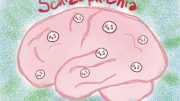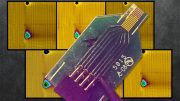
Researchers at the Del Monte Institute for Neuroscience at the University of Rochester have discovered a possible treatment target for neuropsychiatric disorders, such as schizophrenia and autism, during critical windows of brain development. By stimulating underperforming neurons in the dopamine system, which connect to the frontal cortex, they have been able to rescue structural brain deficiencies and potentially alter the disease course, demonstrating long-lasting effects into adulthood.
Throughout childhood and adolescence, the brain is constantly undergoing changes. The emergence of neuropsychiatric disorders such as schizophrenia often takes place in early adulthood. Dysfunction of the dopamine system—necessary for cognitive processing and decision-making—begins during this point in development.
Scientists at the University of Rochester’s Del Monte Institute for Neuroscience are coming closer to identifying a potential therapeutic target. This could be key in the treatment of neuropsychiatric disorders like schizophrenia and autism during these pivotal developmental periods, possibly influencing the brain’s circuitry well into adulthood.
“Brain development is a lengthy process, and many neuronal systems have critical windows—key times when brain areas are malleable and undergoing final maturation steps,” said Rianne Stowell, Ph.D., a postdoctoral fellow in the Wang Lab at the University of Rochester Medical Center and co-first author on research out in the journal eLife. “By identifying these windows, we can target interventions to these time periods and possibly change the course of a disease by rescuing the structural and behavioral deficits caused by these disorders.”
Researchers targeted underperforming neurons in the dopamine system that connect to the frontal cortex in mice. This circuitry is essential in higher cognitive processing and decision-making. They found that stimulating the cells that provide dopamine to the frontal cortex strengthened this circuit and rescued structural deficiencies in the brain that cause long-term symptoms. Previous research from the Wang Lab identified that this specific arm of the dopamine system was flexible in the adolescent brain but not in adults. This most recent research used this window for plasticity in the system as an opportunity for therapeutic intervention.
“These findings suggest that increasing the activity of the adolescent dopaminergic circuitry can rescue existing deficits in the circuit and that this effect can be long-lasting as these changes persist into adulthood,” Stowell said. “If we can target the right windows in development and understand the signals at play, we can develop treatments that change the course of these brain disorders.”
Reference: “Adolescent neurostimulation of dopamine circuit reverses genetic deficits in frontal cortex function” by Surjeet Mastwal, Xinjian Li, Rianne Stowell, Matthew Manion, Wenyu Zhang, Nam-Shik Kim, Ki-jun Yoon, Hongjun Song, Guo-li Ming and Kuan Hong Wang, 31 May 2023, eLife.
DOI: 10.7554/eLife.87414.1
This research was supported by the National Institutes of Health and the Del Monte Institute for Neuroscience pilot program.









Be the first to comment on "Researchers Discover Potential Target for Treating Neuropsychiatric Disorders Like Autism and Schizophrenia in Teens"